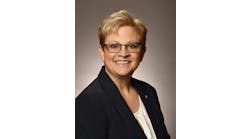Earlier this month, Natalie Trebes, a senior researcher at Advisory Board, Washington, D.C. (a division of the Minneapolis-based Optum) presented a webinar entitled “How COVID-19 Is Shaping Future Payer Coverage Options.” Trebes leads the health plan research team at Advisory Board. Following up on her July 1 presentation, Healthcare Innovation Editor-in-Chief Mark Hagland spoke with Trebes regarding the broader landscape around the emerging future of health plan-provider interactions and contracting. Below are excerpts from that interview.
Where is value-based contracting headed, from the health plan side?
To me, it is going to involve, in the short term, less downside risk, partly because providers are very much financially struggling right now. It’s really difficult for a health plan t go out and say to a provider, your books are in the red, so let’s put you on the hook for more. So I think we’ll be seeing an upswing in upside risk. And the advance payments to providers to help support them, and keep the MLRs [medical loss ratios] as relatively stable as they can—health plans have tried to put some upside risk into those value-based contracts. So there’s a bit of expectation at least that there will be some discussion and negotiation about this—so I think there will be a small increase in value-based payments, but I think there will be a slowing of downside risk in the short term. But in the longer term, the smart plans are planning for more risk-based contacting. The Blue Cross Blue Shield of North Carolina Blue Premier is an example.
[EDITOR’S NOTE: In a blog posted to the health insurer’s website, BCBSNC senior vice president and chief medical officer Rahul Rajkumar, M.D. explained on January 11, 2019, what the organization is hoping to accomplish with Blue Premier. Here is a brief excerpt from that blog: “Health care is evolving at a rapid pace and we recognize that this can leave North Carolinians with tough choices to make. For 85 years, Blue Cross and Blue Shield of North Carolina (Blue Cross NC) has remained committed to advocating for our customers on issues of health care costs and access to care. Better health care requires new and innovative solutions that will help lower costs, and we are here to help. But, what do these solutions look like? We’re excited to introduce Blue Premier, our signature statewide program for transforming health care in North Carolina. Blue Premier serves as a model of health care transformation for the nation. It tackles three critical areas plaguing today’s health care system; changing how we pay for care, putting primary care first and better integration of mental and behavioral health.” Several North Carolina health systems are participating in the program, including Cone Health, DukeHealth, UNC Health Care, Wake Forest Baptist Health, and WakeMed.]
And that was developed while was while Conway [Patrick Conway, M.D., who resigned as CEO of BCBSNC in September 2019; prior to joining BCBSNC, Dr. Conway had served as director of the federal Center for Medicare and Medicaid Innovation; in June, Conway joined Optum as CEO of its Care Solutions subsidiary] was still there, but a number of the same people who had been at CMMI were at BCBSNC; they tried to take some of the lessons from the CMMI and BCBSMA ACQ [accountable care quality] models, and shopped some of those models around [resulting in several North Carolina health systems participating in Blue Premier]. There were some pieces where health systems were able to choose some of the metrics they wanted to focus on. So, a suite of resources and payment structures for some of the physician groups, separately from the contracts with the hospitals. So, there’s customization and room for self-tailoring by the providers. So it’s not just the amount of risk that’s the sticking point of the contract negotiations, but also what you’re asking organizations to do, what kinds of data you’re collecting from them, and so on. And I’m seeing more and more interest from health plans in offering support from a gradual standpoint. They’re much more tailored than they have been in the past, and I suspect that that will continue until some payer has enough volume to really dictate how the contracts will run, or if CMS jumps in. But because they truly have to coax the providers into them, the trend has been to work collaboratively with the providers. Start with Blue Premier, they list everything.
Where are we with the concept of narrow networks right now? There was considerable concern among many providers nationwide that the narrow-networks concept would take off.
Generally, what we’ve been seeing is a lack of consumer interest in narrow networks, and I think that the way that plans had expected, and providers had feared—you generally don’t see them as much in Medicare Advantage or Medicaid managed care. There is a trend towards EPOs, exclusive provider networks—you either successfully use care in your network or you don’t, as a consumer; but EPOs are very cheap to assemble. But on the employer side, employers are certainly trying to balance the costs and benefits of what they’re providing. And the reason they’re still offering insurance that is expensive, is that it is a value driver to their employees. They’re not just looking to offer the cheapest possible thing, though they strongly purchase based on cost. But there’s a minimum threshold involved. And they want a certain size of network, and certainly for employers, it’s difficult for them to grapple with a bunch of very small networks. So on the larger employer side, there’s a tension, and you only see a little bit of interest from the smaller employers who are very deeply embedded form one community and can more clearly see the value of a narrower network; because it ultimately comes down to, can I get employees to actually use this narrower network? Because the savings comes from the rates. And the rates from the narrowing.
There has been tension for 30 years between health systems and health plans over who has the power to set contracting terms, but with consolidation on both sides, where is that going now? Chicago is an example of that ongoing tension, where health plans and providers keep consolidating further in order to bulk up for greater contracting power.
Yes, so where do you actually construct a narrow network with providers that employees would want? Chicago is actually a bit of an exceptional environment; in a lot of places, there aren’t a lot of options, so there isn’t anything you can really cut out. And the providers you’d want to cut out, and they have that brand-name recognition. And employers get very nervous when you try to cut out the brand-name academic medical centers. Also, those are going to be the systems most ready to do value-based care contracts. So you get into this weird conundrum of oppositional goals. So the value of narrow networks has not proven itself relative to the sacrifices you have to make relative to other strategic priorities. They would have to get really, really big savings every year, which is a challenge.
So where this is going is to more of this direction of clinician-specific steerage. There is this trend of plans, provider organizations, and employers looking at individual-clinician performance. The goal is, how do we et you to the highest-performing, most cost-effective specialists? And it will vary by specialty, etc. So constructing a network around one organization is not as promising for employers and plans as being able to flexibly route volumes as it is to route patients towards specific specialists. And that goes hand in hand with the idea of achieving greater facility with data, and providing push notifications in the EMR that doesn’t drive clinicians crazy. So there are a lot of elements that will start enabling this more granular steering of patients to individual clinicians. I think that’s where this is heading.
You’ve got a lot more interest among employers in funding concierge-like steerage programs. And there’s interest among consumers in the some of the technology, such as apps. I think it’s really the interconnectedness of all of these technologies and virtual-visit services, and so on. These have existed individually, but we’re starting to see the emergence of a patient navigation strategy. That’s my two-to-three-year, forward-looking view. We’re
So what should healthcare and healthcare IT leaders be doing to prepare for that emergent world?
We’re looking at where the consumer is, too, in terms of ease and convenience, rather than having them respond robotically to the financial complexities of insurance products. Providers need to focus on what they want to be in control of in the future. If I’m a clinician, in the future, I probably won’t be in control of everything I’m in control of now? What do I actually want to be in control of? And what kind of data can you begin to collect now, that will showcase your performance, but won’t be burdensome? What might you be penalized for, if someone looks at your claims data? And what is your data capture strategy for rounding out that picture? And if more care is being fragmented out—it’s much like the social determinants space. If I invest in a member’s housing, that will help in so many ways, it’s hard to determine exactly what elements that is helping. So being able to parse specific performance elements will become even more difficult in the future, so evidence evaluation strategies will be important; being able to demonstrate value will be more important.
In short, providers really need to focus on proving their value, correct?
Yes, and what it takes to be operational in order to support that, yes.


